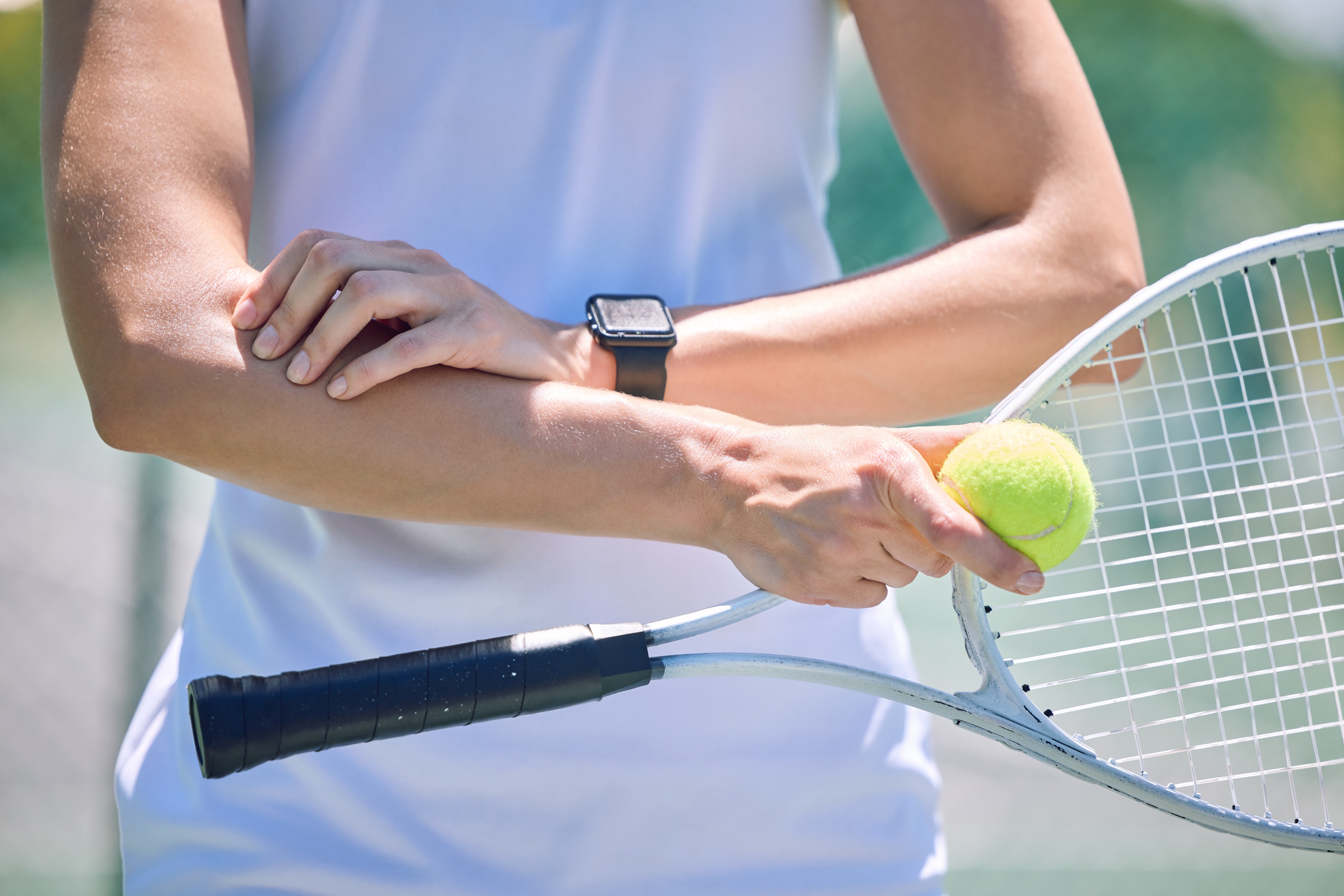Are you experiencing pain on the outside of your elbow? Perhaps it feels tender to the touch or during activities such as racket sports. If so, you may be experiencing a condition known as tennis elbow. Read on to learn more about this condition and treatments to help relieve your symptoms quickly.
What is Tennis Elbow?
Tennis elbow, or lateral epicondylitis, is an injury to the muscles and tendons on the outer side of the elbow. Contrary to what the name suggests, this condition does not only affect tennis players; it is also common among those who take part in professions and activities that involve repetitive arm use and wrist rotation.
The discomfort associated with tennis elbow can travel from the outside of the elbow into the forearm and wrist. Pain and weakness may occur, which can make it difficult to take part in normal activities such as gripping an object, shaking a hand, turning a doorknob, or holding a cup of coffee.
What Causes Tennis Elbow?
Tennis elbow is often caused by overuse and muscle strain. Repeated tensing of the forearm muscles used to straighten and raise the hand and wrist can trigger these symptoms. It can also cause the fibers in the tendon that attach the forearm muscles to the bony bump at the outside of the elbow to break down.
Activities that may cause tennis elbow symptoms include:
- Racket sports such as tennis
- Painting
- Using plumbing tools
- Driving screws
- Using a computer mouse frequently
Preventing Tennis Elbow
If you believe that you are at risk for tennis elbow, there are some steps you can take to prevent it from developing or coming back. These steps include stopping the activity that is causing pain, avoiding using your wrist and elbow more than the rest of your arm, warming up properly and stretching before playing sports that involve arm movements, wearing a tennis elbow splint if needed, and increasing the strength of your forearm.
Treating Tennis Elbow in California
At Regional Hand Center, we believe in an evidence-based and personalized approach to treatment under the expert guidance of Dr. Randi A Galli. The treatment options typically include rest, physical therapy, a brace, and surgery in more severe, non-responsive conditions.
The first step for tennis elbow treatment is to limit the activity that is causing discomfort. Depending on the activity and if it is necessary (as part of your job), your orthopedic hand specialist can help you find ways to relieve symptoms. From there, they will recommend your case’s best course of action.
Treat Your Tennis Elbow Today
Understanding Tennis Elbow better and knowing that credible help is within your reach can go a long way in preventing and dealing with this problem. Remember, taking care of your arms is a crucial part of taking care of your overall health and wellness. We invite you to reach out with any questions or to schedule an appointment with Dr. Galli to discuss your concerns.
Back to All Blogs